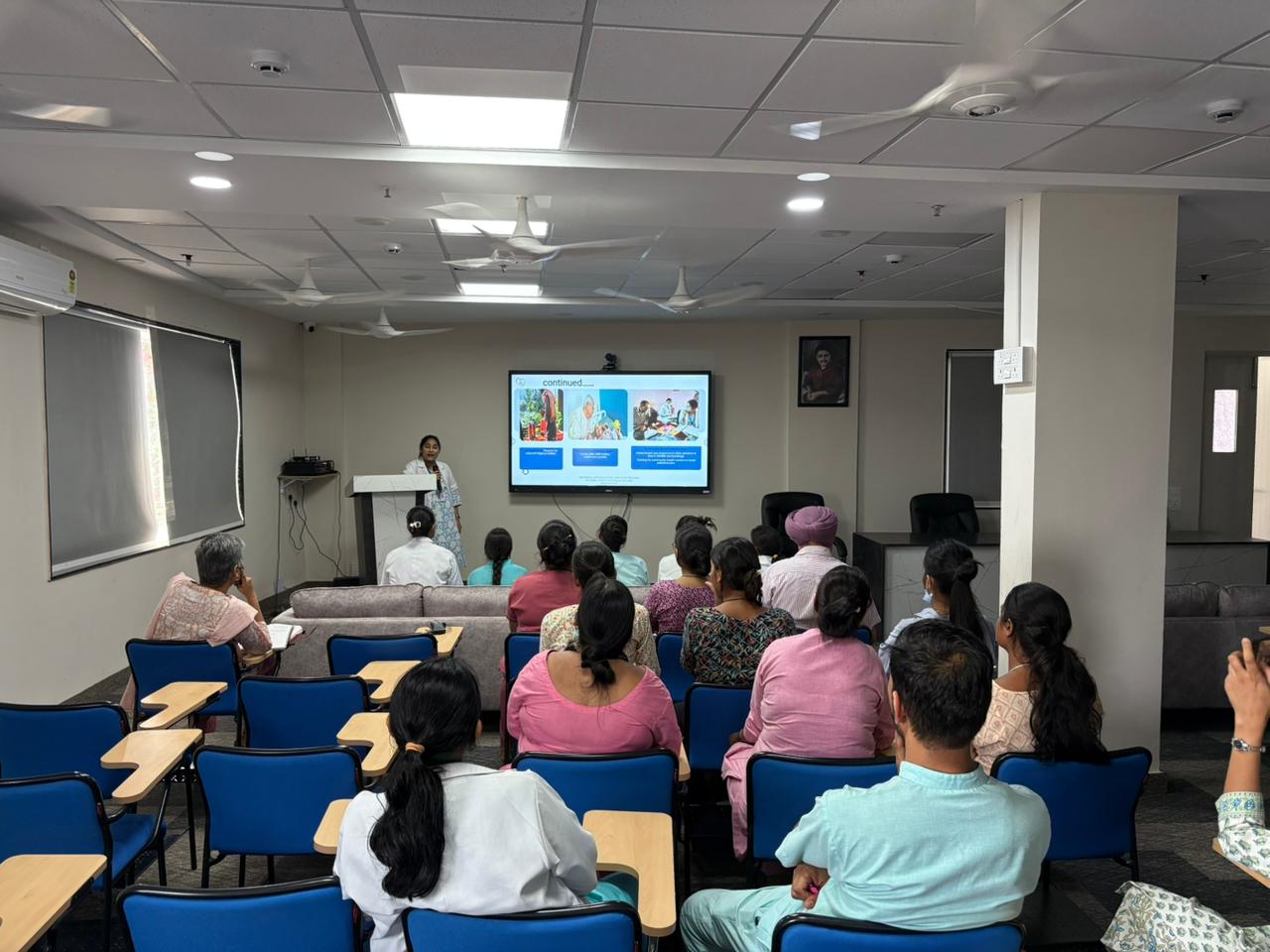What happens when a palliative care nurse visits the home of a terminally ill patient for the first time?
How much do patients and their families understand about the prognosis, and what role do denial and fear play?
Nurses and professional caregivers from Ganga Prem Hospice provided valuable insights into these common questions through their firsthand experiences during the clinical learning session, Palliative Care Principles and Practices, which coincidentally took place on International Nurses Day, May 12.
From addressing concerns such as respite care and the common questions most frequently asked by caregivers, to highlighting the challenges and barriers in delivering palliative care, nurses shared their daily experiences and insights into best practices.
“Palliative care is still not understood enough,” said senior nurse Mamta Krishali. “Referring doctors may not always explain about palliative care in detail or the counselling may be happening too late, giving the palliative care team very little time to make an appreciable difference in the patient’s quality of remaining life,” she said.
So, how do nurses approach explaining palliative care to a patient for the first time?
According to senior nurse Sheetal Kaintura, the most challenging aspect is getting patients to accept palliative care. She noted that introducing palliative care and explaining what it means to a patient for the first time is the hardest part.
The term itself “palliative care” sometimes puts patients’ caregivers off as they equate it with the end of life. With cancer, hope for a cure or intervention is something that is held on to till the end.
A GPH nurse recounted how, when a patient is just hours away from death, terminal symptoms often distress the family, prompting them to seek advice on whether they should let their patient stay at home or rush her to a hospital.
Explaining the patient’s prognosis to the caregivers during a home care visit (which is the first visit, more often than not), nurse Krishali narrated how informing the family that the patient had a limited time remaining, resulted in the family deciding that no further visits were necessary.
“Accepting advanced or terminal cancer prognosis is a very hard reality to come to terms with. Earning trust during home care visits takes time too,” said Krishali.
Myths and concerns about morphine
One of the prevalent misconceptions about Morphine, the most commonly used drug to relieve pain, is that it is administered only when the patient is on the death bed and counting their last breath was a recurring query during the session.
Nurses said that the drug is considered addictive and too strong for the patient to handle. It is not very well known that morphine can help in easing respiratory distress. Another common query raised by the patients’ families involves dosage or potency of medicines, or even the colour change of the prescribed medicines.
Addressing nutrition needs
Dietician Nandini shared her experience of how, in palliative care, family members are concerned that their loved one is not eating solid food anymore (primarily chapatis). She explained if rotis are difficult to swallow, there are many other semi-solid and liquid diet options that give optimal nutrition.
Respite care in home and GPH inpatient facility
On the topic of respite care, nurses emphasized how hospice home care visits are a lifeline for patients and families. Dressing of wounds is the single biggest relief that patients and their families receive as GPH nurses bring sterilized dressing materials to patients’ homes and provide necessary wound care.
Besides, procedures like ryles tube insertions are done at home and free-of-charge, which would otherwise entail spending of at least a couple of thousand rupees and visits to a medical facility. Unfortunately, not all patients are even strong enough to make a trip to the hospital. Medications are also delivered to patients’ homes, along with clear guidance on how to administer them.
GPH nursing assistant Uma Gauniyal highlighted how getting care in a hospice inpatient facility also provides respite. “A patient’s caregiver shared that at home they received no relief as relatives and friends constantly called to inquire about the patient’s well-being. At the hospice, the patient was able to rest much more than at home,’’said Gauniyal.

